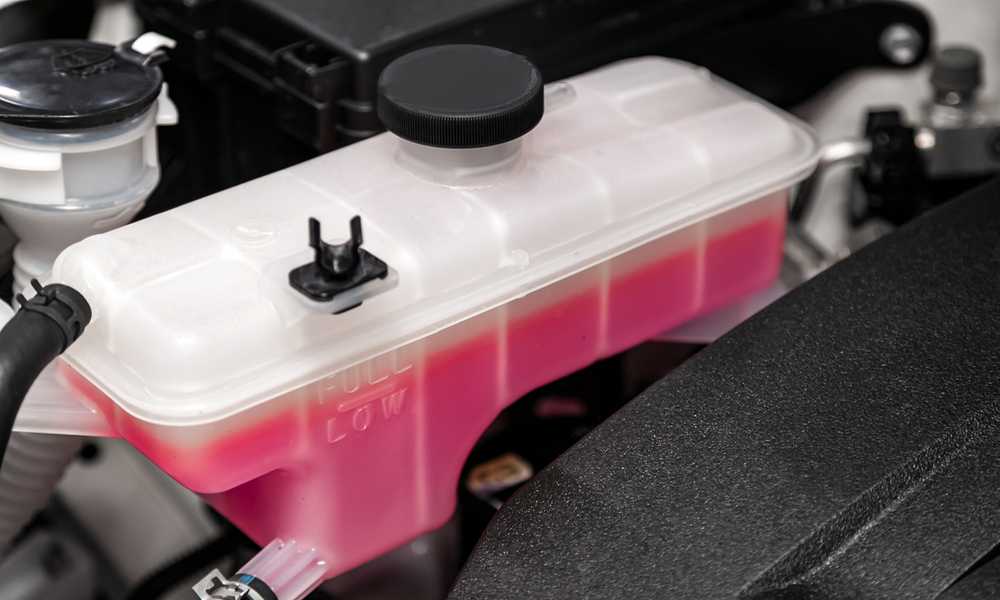Is your Mercedes-Benz flashing a message about the coolant level? Stay calm for now. Read this post to learn about the ins and outs of gauging the coolant in your prized vehicle. If your Mercedes is losing coolant, we’ll tell that you how to check coolant level Mercedes, as well as what could be causing the problem. Relax with a cup of coffee in hand and listen as we go into the ins and outs of keeping the motor in your luxury vehicle running at peak efficiency.
When should coolant be replaced?
Knowing when you should change the coolant in any Mercedes-Benz is important for the longevity and efficiency of your vehicle. Engine overheating can be avoided with the use of the coolant, often called antifreeze In that case, how do you know when it’s time to swap out the coolant? Well, there is no hard and fast rule regarding distance or time periods. Coolant should be replaced every 30,000–50,000 miles or every three–five years, as recommended by most experts.
But keep in mind that these are merely broad suggestions. The amount of time your coolant lasts depends on a number of factors, including how often you drive and the weather. There may be a greater need for frequent modifications if you frequently travel in conditions such as those described above (high temperatures, heavy hauling, and/or stop-and-go traffic) Always check the owner’s manual and the car for specific instructions on when to change the coolant. Accurate data relevant to your vehicle’s make, model, and year will be delivered. Adhering to these rules and performing preventative maintenance checks on your Mercedes’ cooling system can guarantee peak performance and head off any problems in the future. After all, it’s preferable to avoid illness in the first place.
How can I refill the Mercedes’s radiator?

The operation of topping off the coolant in your Mercedes is straightforward and may be done by yourself. Follow these simple steps to refill the coolant in your Mercedes:
- find an even area to park your Mercedes and shut off the motor. After continuing, check that the engine has cooled down.
- Pop the hood of your Mercedes and find the coolant tank. Translucent plastic containers with minimum and maximum level indications are the norm.
- using the reservoir’s markings, verify that the cooling fluid is at the correct level. If it’s too low, you’ll need to top it off with more coolant.
- Mix coolant and distilled water together in a separate container until the two are evenly distributed.
- In a slow, steady stream, fill the container with the cooling solution to just over the top mark.
- Check that there are no leaks after you’ve closed the cap.
- The seventh step is to start the vehicle and let it run for a few minutes while you check for leaks and overheating.
How much coolant does your Mercedes have?
Maintaining your Mercedes-Benz includes monitoring the coolant level on a regular basis. The coolant, also known as antifreeze, is crucial in avoiding engine overheating by maintaining a constant temperature Find the coolant reservoir under the hood of your Mercedes-Benz vehicle to inspect the level. You may recognise it by its cover, which reads “engine coolant” or “antifreeze.” Make sure the engine is completely cold before removing the cap to prevent burns.
After taking the top off, check to see if the coolant level is between the minimum and maximum lines. Adding extra coolant is necessary if the level drops below the minimal line. The technique of adding coolant is straightforward. Fill the reservoir between the two markings we pointed out by pouring it in with a funnel. Overfilling might lead to problems with air bubbles in your cooling system, so be careful Always make sure that it has the right amount of fluid in it to ensure peak performance and a long life. Regular service ought to involve checking the cooling system level in the Mercedes-Benz.
Explain why it’s important to check coolant level Mercedes-Benz vehicle.

Maintaining your Mercedes-Benz includes checking the amount of the coolant. It keeps your engine at a safe temperature so it can perform at its best. The major goal of checking the coolant level is to forestall the occurrence of overheating. Coolant, often known as antifreeze, is used to keep your engine to overheating by transferring excess heat away from critical components. Overheating can cause serious problems that can lead to engine failure if you don’t have adequate coolant. A leak in the cooling system could be detected by checking the coolant level. Leaking water from your Mercedes-Benz without any obvious leaks is a sign of a more serious problem with the cooling system and should be looked into.
By checking the coolant level on a regular basis, you can make sure there are no pollutants in the system. Impurities in a coolant mixing may lead to corrosion or clogs in the cooling system if left unchecked for long enough. Your Mercedes-Benz will last longer and require less maintenance if you keep an eye on the coolant amounts and top them off as necessary. It’s an easy but essential step in maintaining your car’s performance.
My Mercedes-Benz has a cooling system leak.
The loss of engine coolant is a typical problem for Mercedes-Benz drivers. This may be an indication of a problem with the car’s cooling system and should be taken seriously. Your Mercedes-Benz could be leaking coolant for a number of different causes. There may be a leak somewhere in the system. deterioration on hoses and connections can cause coolant to leak over time. Look for puddles under the car or low coolant levels as regular reminders to check for leaks. A leaky radiators cap is another possible cause to fluid loss. When the cap isn’t sealing properly, coolant could leak out of the system. You can stop the leak of coolant by checking a radiator cap and changing it if necessary.
Engine problems on the inside, like a blown head gasket or damaged cylinder head, can also lead to coolant leaking out. Avoid further damage to your Mercedes-Benz by having these problems fixed as soon as possible by a trained repair. Overheating can cause expensive engine damage, therefore fixing leaks in cooling system as soon as possible is essential. If you find that your Mercedes-Benz is leaking engine coolant, you should take it to a mechanic who has experience with high-end vehicles.
My Mercedes keeps warning me to check the coolant level; why is that?
If your Mercedes shows a “check coolant level” warning, it could be because the coolant level is low. Coolant, commonly known as antifreeze, is essential for keeping your engine at the correct temperature. It aids in heat dissipation and keeps the engine from getting too hot. A low coolant level in your Mercedes could be caused by a number of different things. There could be a leak in the cooling system, possibly from a hose or the radiator. Another possible cause is a radiator cap that leaks coolant because it doesn’t seal properly.
Don’t dismiss this warning, as driving with insufficient coolant might severely damage your engine. If you keep driving without fixing the problem, it could overheat, which could lead to costly repairs. You should look for leaks or damaged hoses as a starting point for fixing this problem. If none are, it’s best to take it in to a professional technician who can figure out what’s wrong and fix it. You should always make sure the coolant level in your Mercedes-Benz is checked as part of your routine maintenance.
Mercedes-Benz: How to Reset the Coolant Warning Light.

When the coolant warning light comes on in a Mercedes-Benz, immediate action is required. If you disregard this warning, you may end up with a severely damaged engine and expensive repairs. Fortunately, the coolant light is easy to reset. First, you’ll need to turn off the ignition and pop the bonnet of the Mercedes in order to reset the coolant light. The coolant reservoir can be recognised by its blue top or its MIN/MAX markings. Be careful when you remove the cap, since hot steam and pressure may escape.
Then, fill that to the right level with a solution with half water and half freeze. Don’t put too much in! After refilling the reservoir, make sure to return the lid tightly. The next step in turning off the coolant warning light is to turn the key in the ignition but not start the car. It should take roughly 30 seconds, during which time you should monitor your dashboard closely.
That wraps it up, then. If you were having problems with your Mercedes-Benz’s coolant levels, you should now be able to turn off the warning light. Always make sure the engine coolant levels are at the right level by monitoring them regularly. After filling the radiator, if you still have problems with the coolant level, you should take your Mercedes to a skilled repair who specialists in Mercedes-Benz automobiles. Maintaining your luxury vehicle regularly will ensure that you have many trouble-free kilometers ahead of you.
Can you drive if the coolant level is low?
Is it safe to drive with the Mercedes-Benz’s “check coolant level” light on? When they see this warning pop up on their the dashboard, many drivers may wonder why. The solution is not as simple as you may expect. Low coolant levels pose hazards on the road for a number of reasons. The primary function of engine coolant is to keep the engine from overheating. Lack of enough coolant circulation in the system might cause expensive engine failure.
Low coolant levels could also be an indication of a leak in the cooling system. A full breakdown of the cooling system is possible if you choose to ignore this problem and keep driving. This could cause you to be stranded on the side of the road or force you to pay for costly repairs. If you get a message telling you to “check coolant level,” do so without delay. Stop your car in a well-lit area and switch to park. Do not attempt to add any more cooling liquid until it has cooled down. Despite the allure of continuing your journey despite a worryingly low coolant level, you should avoid doing so. Your Mercedes-Benz’s engine will be healthier and last longer if you take care of this problem as soon as possible.
What happened to the refrigerant?

This is a common source of confusion for Mercedes-Benz owners. The coolant in your car’s cooling system keeps the engine at the right temperature and keeps it from overheating. It’s therefore cause for alarm when you discover that the coolant level in your Mercedes has unexpectedly plummeted.
Several factors can lead to coolant loss in a Mercedes-Benz. A leak in the cooling system is a frequent cause of this problem. Possible causes include a broken radiator, leaky hoses, or an inefficient water pump. Broken head gaskets can also cause coolant to mix with engine oil and be expelled through the exhaust system.
It’s also important to remember that some coolant loss is to be expected over time. However, if you see puddles under your car or a steady loss of coolant, you should get it checked out as soon as possible.
It may be essential to perform a comprehensive inspection of your vehicle’s cooling system in order to determine precisely where the coolant disappeared to. Pressure testing or visual inspections for leaks could be used for this purpose. In any case, if you feel that your Mercedes has lost coolant, it is vital not only to replenish the reservoir but also to determine and fix the underlying reason as quickly as possible. Ignoring low coolant levels might result in expensive engine damage and repairs down the road. Remember that maintaining the optimal performance and longevity of your Mercedes requires a regular check of the coolant level.
Concluding Ideas
Your Mercedes-Benz will run much better and last much longer if you keep the coolant at the ideal level. You may avoid engine overheating and expensive repairs by keeping track of the coolant level and topping it up as needed.
Make sure you check the coolant level as indicated, and always use the coolant brand that Mercedes suggests for your model. If your coolant level suddenly drops or your car gives you a “check coolant level” alert, you should get to the bottom of why that is happening as soon as possible.
Refer to the owner’s manual or talk to a certified technician who specialises in Mercedes vehicles if you don’t know how to check or add coolant to your Mercedes-Benz. They can offer direction and check in to make sure everything is running smoothly.
Maintaining your Mercedes on a regular basis, including monitoring the cooling system, will keep it in top shape for years to come. Don’t forget to check the coolant level in your car often; doing so is a simple but crucial chore. Taking these precautions will not only secure one of your most expensive possessions, but will also guarantee that you can drive your cherished Mercedes-Benz without fear.



